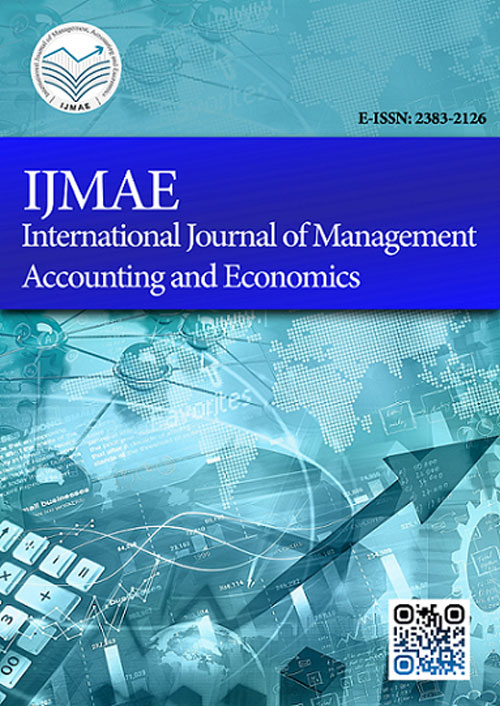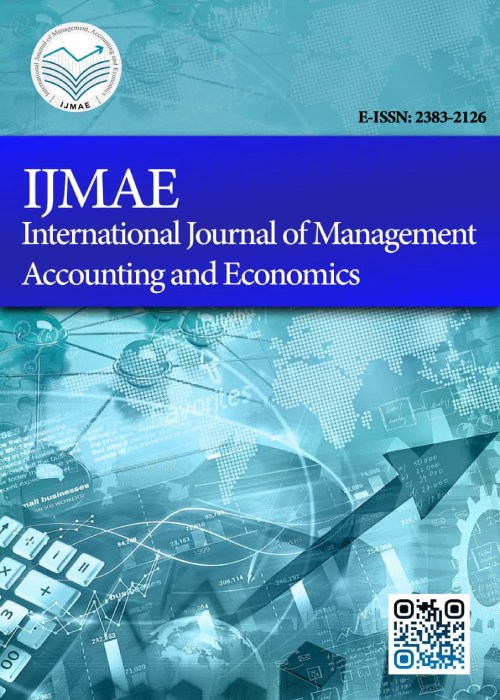فهرست مطالب

International Journal of Management, Accounting and Economics
Volume:9 Issue: 6, Jun 2022
- تاریخ انتشار: 1401/05/26
- تعداد عناوین: 4
-
Pages 322-353There is a huge opportunity for foreign entrepreneurs to enter the Chinese market. They have noted that the market is difficult to enter and complex to navigate. This study contributes towards filling this gap by identifying the critical success factors for foreigners in China, basing on entrepreneurial cognition and opportunity recognition theories. 128 entrepreneurs in China were surveyed through semi-structured interviews. Their responses were collated and analyzed using graph theoretic matrix approach to identify and rank the factors with the most influence on their business success. The factors with the greatest influence on the success of foreign entrepreneurs are government policies and funding. Government policies towards innovation through financing for technology companies and the demographic make-up of the consumer population provide the greatest opportunities for foreigners. By understanding the most crucial success factors and the role of cognition in opportunity recognition, entrepreneurs and managers can derive meaningful insights into strategic choices regarding doing business in China. This study addresses a grossly under-researched topic of global entrepreneurs in China. Not only is there a large number of foreigners living in China, but they also find great difficulty in adjusting to the cultural scene and this affects business outcomes. Furthermore, GTMA is a highly scientific method that the authors show is valuable in social science research, particularly entrepreneurship researchKeywords: China, international entrepreneur, cognition, Opportunity Recognition
-
Pages 354-376The main goal of this study was to analyze the relationship between competitive intelligence (CI) and strategic decision-making and its six aspects such as quality, agility, flexibility, integration, effectiveness and efficiency in small and medium-sized food enterprises in Iran. This was an empirical study in which we searched to prove that competitive intelligence elevates the process of managing and making important decisions to a higher level. In this study, a conceptual model was developed to demonstrate the effect of CI on strategic decisions. The statistical population estimated at 90 senior managers from top small and medium-sized food enterprises in Iran, and based on the Cochran formula, the sample of this research included 73 managers of the SMEs in Iran food industry We used factor loading, path analysis, t-value, and Probability value (p-value) to analyze the data. The study's results indicated that CI could help with strategic decisions and significantly affect considered strategic decision's sides. Based on the t-value’s findings, CI had the most impact on the quality, flexibility, and effectiveness of the strategic decision-making, 15.139, 12.868, and 11.641, respectively. Therefore, CI acts as a support system to develop strategic decisions.Keywords: Competitive Intelligence, Strategic decision making, Efficiency, Food enterprises
-
Pages 377-395
The environmental considerations have gained increasing attention both from industry practices and academic research over the past three decades. Selection and cooperation with appropriate suppliers have become strategically important in the cosmetics' industry, too. There are various publications concerning green supplier selection and evaluation in general. However, a review on the supplier selection literature focusing on cosmetics industry shows a poor attention to "Green" criteria. Hence, the novelty of the paper is concentrating on this question: what are the most important criteria for "Green" evaluation and selection of the suppliers in the "Cosmetics" industry. Due to the inherent uncertainty in subjective opinions of the industry experts, the Fuzzy Extent Analysis and Delphi methods were applied. Finally, this study aims at identifying and prioritizing the supplier selection measurement indicators with environmental concerns under uncertain conditions in the Iranian Cosmetics Industry. The preferences of experts over the attributes were gathered using a pairwise comparison-based questionnaire. The hierarchical clustered representation of the four main attributes; Quality, Risk, on time delivery, environment; and their importance weights were achieved as the result of the study.
Keywords: green supplier selection, Fuzzy Extent Analysis, Cosmetics Industry, Prioritization -
Pages 396-412
In the theory of microeconomics, in discussions related to consumer behavior, it is usually assumed that the household acts as a decision-making unit like an individual, and for a household, a budget constraint and a utility function are considered. As a result, only the general behavior of the household will be observable and analyzed. Since the 1980s, this method, which is called the Unitary Household Model, has been criticized theoretically and empirically, and issues such as the inequality of household members have been raised. In contrast to the Unitary Household model, Collective Household Model was proposed in consumer behavior. According to this method, in multi-member households, each member has their own preferences, and what can be important between these members is the intra-household bargaining process. In this article, at first, we will give an introduction including the theoretical foundation and the background of the research, then, while introducing the unitary model as an introduction to collective models, we will examine the collective model and inta-household collective models. At the end, the contents are summarized and suggestions for future research are presented.
Keywords: Unitary Household Model, Collective Household Model, Household Bargaining, Intra-household Allocation, Consumption Behavior, labor supply


